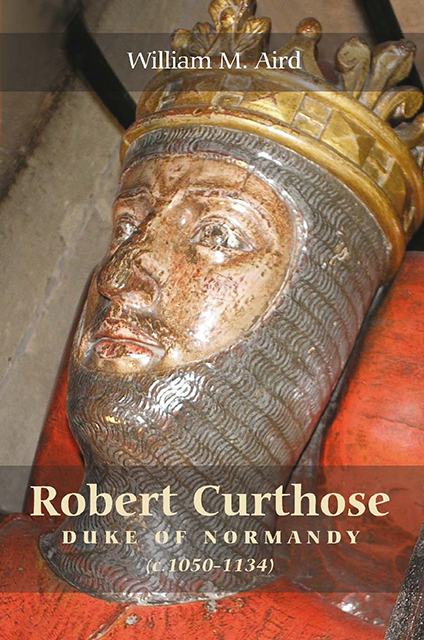Book contents
- Frontmatter
- Contents
- Dedication
- Acknowledgements
- Abbreviations
- Maps
- Genealogy: The Family Connections of Robert Curthose
- Introduction
- Chapter One Childhood
- Chapter Two The Dutiful Son
- Chapter Three The King's Son
- Chapter Four The Duke of Normandy, 1087–1096
- Chapter Five Miles Christi: The Soldier of Christ, 1095–1099
- Chapter Six The Returning Hero, 1100–1106
- Chapter Seven The Captive
- Epilogue
- Bibliography
- Index
Chapter Two - The Dutiful Son
Published online by Cambridge University Press: 03 March 2023
- Frontmatter
- Contents
- Dedication
- Acknowledgements
- Abbreviations
- Maps
- Genealogy: The Family Connections of Robert Curthose
- Introduction
- Chapter One Childhood
- Chapter Two The Dutiful Son
- Chapter Three The King's Son
- Chapter Four The Duke of Normandy, 1087–1096
- Chapter Five Miles Christi: The Soldier of Christ, 1095–1099
- Chapter Six The Returning Hero, 1100–1106
- Chapter Seven The Captive
- Epilogue
- Bibliography
- Index
Summary
As Robert grew into boyhood, his father's power within Normandy was consolidated. In 1054 and 1057 William successfully defended his duchy against attacks by Henry I of France and Count Geoffrey of Anjou. Their enmity was largely a response to William's growing influence but, in 1060, both died, leaving problems for their successors and opportunities for their neighbours. By the end of his first decade, Robert was already a key figure in his father's plans to extend Norman influence. This chapter deals with Robert's betrothal to Margaret, heiress to the county of Maine. It also considers Robert's military training and the acquisition of skills that were considered essential not only for his career as a great chivalric hero, but also in creating and maintaining his social identity.
Margaret of Maine
William wished, as a wise conqueror and dutiful parent, to make the best provision for the future of his children. For that reason he had Herbert's sister brought from the Germanic lands by his generosity, at great expense, and destined her to marry his son, so that through her he and his offspring could, by that same right which could not be overthrown or weakened by any contention, possess the inheritance of Herbert as brother-in-law and grandchildren.
The betrothal to Margaret of Maine initiated Robert into his father's ambitions for the extension of Norman lordship and influence. Although no more than about ten or eleven, Robert found himself committed to a marriage with a girl barely older. Margaret, ‘far more beautiful than any pearl’ – a pun on the Latin margarita, ‘a pearl’ – was the daughter of Count Hugh IV of Maine and his wife, Bertha. Count Hugh had died in 1051, leaving Margaret's brother, Herbert II ‘Bacon’, as his heir; after the death of Herbert in 1062, William invaded Maine.
The county of Maine lies to the south of Normandy and in the eleventh century it was caught between two more dominant powers: Anjou and Normandy. It was also under pressure from the Bellême family who were intent on carving out an independent lordship by annexing lands in northern Maine and southern Normandy. At the time of Count Hugh's death, the Angevin count, Geoffey Martel, asserted his lordship and in the 1050s consolidated his hold over Maine by capturing Le Mans. Geoffrey was the inveterate opponent of William and resistant to any interference in the region.
- Type
- Chapter
- Information
- Robert `Curthose', Duke of Normandy [c. 1050-1134] , pp. 41 - 59Publisher: Boydell & BrewerPrint publication year: 2011

